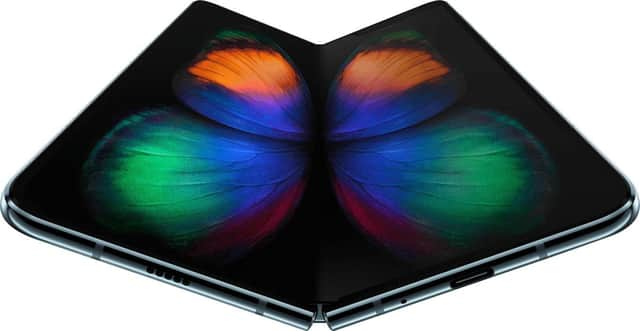Will we all flip out over phones that fold in half?


As long as there have been mobiles, there have been models that fold in the middle, to ease the tiresome process of having to pop them into your pocket or bag. It was a market Motorola made its own in the 1990s, with screens and touchpads concealed behind flip-out keyboards.
Fast-forward a generation, and folding is back in fashion, but this time it’s the screens themselves that are hinged – and in some cases you can hardly see the join.
Advertisement
Hide AdAdvertisement
Hide AdMotorola – now in Chinese rather than American ownership – is once more at the vanguard of the new movement, but it is by no means alone. Another Chinese maker, Huawei, has just released its first foldable phone outside its native market, and Samsung has two models available. Before the year is out, devices from Sony, LG, Microsoft, Xiaomi and Oppo will have joined them on the shelves. As ever, as supply increases, prices will go in the opposite direction.
All of them have one thing in common, which is that you don’t need to flip them open to use them – but you double the available size when you do.
Each manufacturer has adopted a different arrangement, though. Huawei’s Mate Xs has a screen which wraps right around the outside, opening out to an eight-inch tablet-sized display. Samsung’s Galaxy Z Flip does the trick in reverse, with the screen on the inside and only minimal notifications and a viewfinder visible when it’s closed. The screen is 6.7 inches unfolded, which is only slightly larger than many non-foldable models – and although it’s obviously only half the size when closed up, it’s also twice as thick.
The 2020 version of the Motorola Razr is similar in form to the Samsung model, but it’s more compact and comes with a more functional mini-screen on the outside.
Advertisement
Hide AdAdvertisement
Hide AdSamsung’s Galaxy Fold, its first stab at a hinged device, went in the opposite direction – literally – by putting the crease lengthways to reveal an almost square 7.3 inch display within. The outer screen is 4.6 inches from corner to corner, but it’s tall and very thin, and not comparable with regular phones of that size.
Against all these, Huawei’s folding phone is the most flexible, and would have been the better buy had it not been for the US trade ban against the company, which means the Mate Xs can’t access Google Maps, YouTube or other services from that part of the world. Given the asking price of around £1,000, that’s quite a compromise – although having said that, all of these phones are too experimental to be worth buying outright; a contract deal is a far better option.
The other makers have yet to fully declare their hands, though Xiaomi has previewed an interesting tri-fold device, and Microsoft has said that its folding phone will be based on Google’s Android system rather than its own Windows software – the mobile versions of which have been somewhat expensive and embarrassing fiascos. In fact, Android is something that all the folding phones have in common, Apple having yet made no move in that direction.
Ultimately, the point of a device that folds in half is to serve two purposes – as a phone and a tablet. Whether that is really practical depends on how durable these early models turn out to be after a year or two of daily use, and on whether they eventually can be made for less than the price of two separate devices.
We will have to wait and see how the story unfolds.
Comment Guidelines
National World encourages reader discussion on our stories. User feedback, insights and back-and-forth exchanges add a rich layer of context to reporting. Please review our Community Guidelines before commenting.